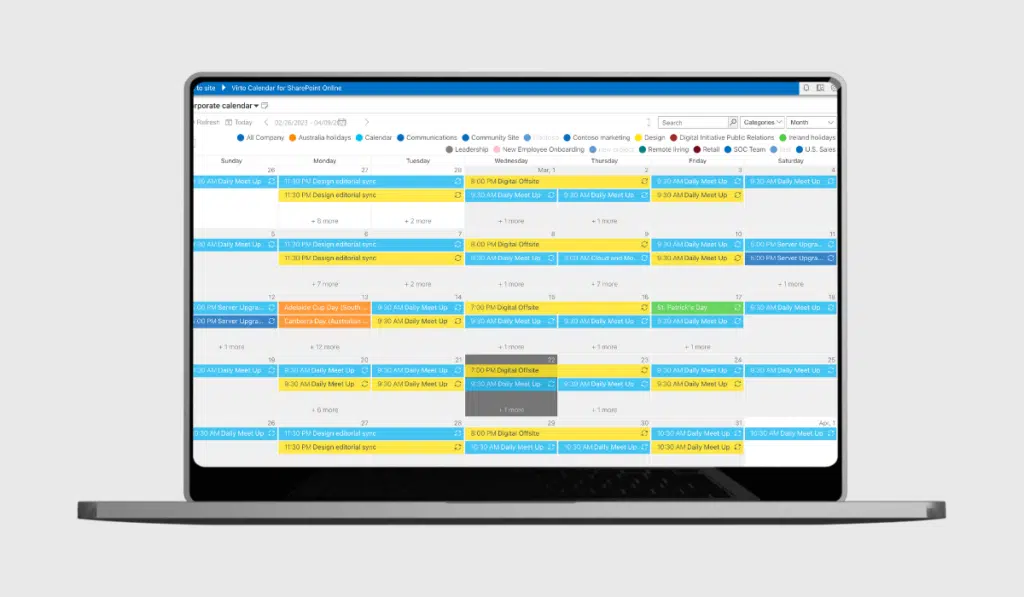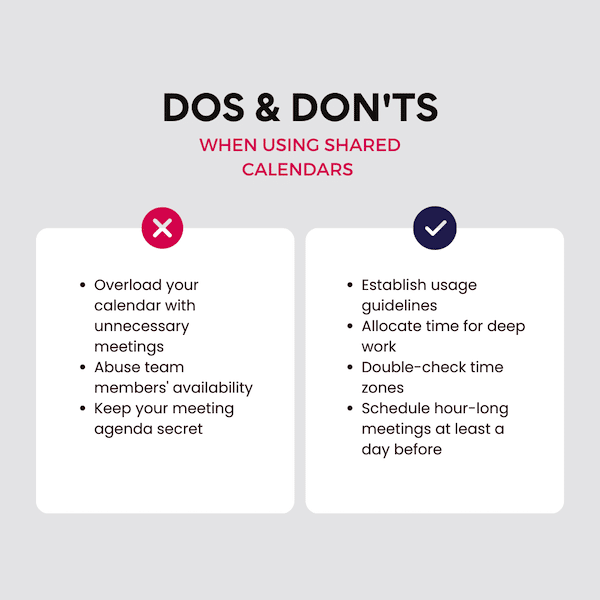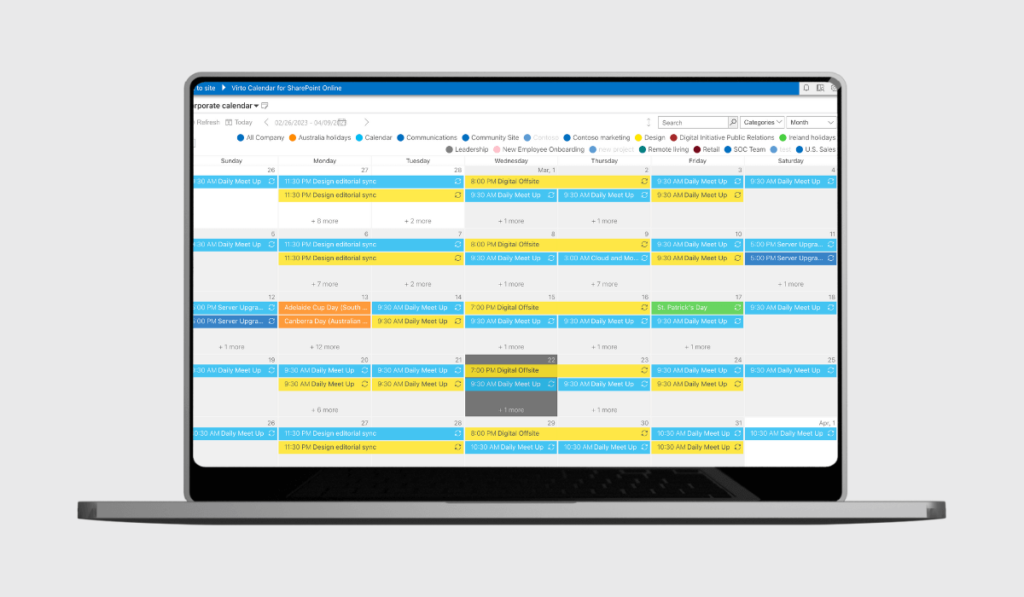Mastering Shared Outlook Calendars: A Complete Information for Groups of All Sizes
Associated Articles: Mastering Shared Outlook Calendars: A Complete Information for Groups of All Sizes
Introduction
With nice pleasure, we’ll discover the intriguing matter associated to Mastering Shared Outlook Calendars: A Complete Information for Groups of All Sizes. Let’s weave fascinating data and supply contemporary views to the readers.
Desk of Content material
Mastering Shared Outlook Calendars: A Complete Information for Groups of All Sizes

In at this time’s collaborative work atmosphere, environment friendly scheduling and communication are paramount. Microsoft Outlook, a staple in lots of organizations, gives highly effective calendar options, together with the flexibility to create and handle shared calendars. This permits groups to view appointments, conferences, and deadlines in a centralized location, boosting productiveness and decreasing scheduling conflicts. Nevertheless, successfully using shared Outlook calendars requires understanding their nuances, capabilities, and limitations, notably when coping with bigger groups. This text gives a complete information to creating, managing, and optimizing shared Outlook calendars, particularly addressing the challenges and greatest practices for groups exceeding even 100 members, aiming to help teams of as much as a number of thousand.
Understanding the Fundamentals of Shared Calendars in Outlook
Earlier than delving into the complexities of managing large-scale shared calendars, let’s set up the basics. A shared Outlook calendar permits a number of customers to view and, relying on permissions, modify a single calendar. This contrasts with particular person calendars, that are non-public and accessible solely to the proprietor. The important thing advantages embody:
- Centralized Scheduling: Eliminates the necessity for fixed e mail exchanges to coordinate schedules.
- Improved Group Visibility: Everybody can see what others are engaged on, decreasing double-booking and conflicts.
- Enhanced Collaboration: Facilitates simpler planning for initiatives and workforce occasions.
- Useful resource Administration: Supreme for managing shared sources like assembly rooms or gear.
Making a Shared Outlook Calendar:
The method of making a shared calendar in Outlook is comparatively simple, whatever the variety of customers. Nevertheless, the administration methods differ considerably relying on the scale of the workforce.
- Proper-click in your calendar: In your Outlook calendar view, right-click on the calendar folder you need to share.
- Choose "Properties": It will open the calendar properties window.
- Navigate to the "Permissions" tab: This tab permits you to handle who can entry your calendar and what degree of entry they’ve.
- Add customers: Click on "Add…" so as to add the e-mail addresses of the customers you need to share your calendar with.
-
Assign permissions: For every person, choose the suitable permission degree:
- Reviewer: Can solely view the calendar; no modifying capabilities. Supreme for a big workforce needing visibility however not modifying rights.
- Editor: Can view and modify appointments; can add, delete, and edit entries. Appropriate for a smaller, core workforce immediately managing the calendar.
- Proprietor: Full management over the calendar, together with including and eradicating customers and altering permissions. Typically, just one individual ought to maintain proprietor standing.
Scaling Shared Calendars for Giant Groups (100+ Customers):
Managing a shared calendar for a big workforce presents distinctive challenges. Merely including 100+ customers to a single calendar can result in efficiency points, confusion, and issue in sustaining group. Due to this fact, a extra strategic method is required:
-
Delegation and Sub-calendars: As a substitute of 1 large shared calendar, contemplate creating a number of sub-calendars organized by division, workforce, or challenge. Assign house owners or editors to every sub-calendar, empowering people to handle particular areas. This permits for higher group and reduces the workload on any single individual.
-
Using Useful resource Calendars: For managing shared sources (assembly rooms, gear), useful resource calendars are invaluable. These calendars enable customers to e-book sources immediately, eliminating the necessity to coordinate with a central administrator. Outlook’s built-in useful resource scheduling options simplify this course of.
-
Categorization and Colour-Coding: Using color-coding and classes inside every calendar can tremendously improve readability and readability. Totally different colours can signify completely different groups, initiatives, or sorts of occasions. This visible distinction is essential when coping with quite a few entries.
-
Automated Reminders and Notifications: Configure automated reminders and notifications for vital occasions. This ensures everybody stays knowledgeable about upcoming conferences and deadlines, no matter their particular person calendar view.
-
Common Calendar Audits and Cleanups: Periodically assessment and clear up the shared calendars to take away outdated or irrelevant entries. This maintains effectivity and prevents muddle, notably essential in large-scale calendars.
-
Coaching and Documentation: Present complete coaching to all customers on successfully use the shared calendars, together with greatest practices for including entries, managing conflicts, and using the options. Clear documentation can even help customers in navigating the system independently.
-
Think about Third-Get together Calendar Administration Instruments: For terribly giant groups (approaching or exceeding 2000 customers), contemplate integrating third-party calendar administration instruments that provide extra superior options, corresponding to superior permission settings, automated scheduling, and strong reporting capabilities. These instruments typically present higher scalability and efficiency in comparison with relying solely on Outlook’s built-in options.
Addressing Potential Points in Giant Shared Calendars:
Even with cautious planning, challenges could come up when managing shared calendars for giant groups:
-
Efficiency Points: A closely populated shared calendar can result in gradual loading occasions and responsiveness points. The methods talked about above, notably using sub-calendars, assist mitigate this.
-
Permission Conflicts: Clearly outlined permission ranges are essential to forestall unintentional deletions or modifications. Commonly assessment and replace permissions to make sure they align with the workforce’s wants.
-
Information Integrity: Sustaining knowledge integrity is important. Implement processes to make sure that data is correct, constant, and up-to-date.
-
Over-Scheduling: With many customers accessing the identical calendar, there is a danger of over-scheduling. Encourage customers to test the calendar earlier than reserving appointments and to be aware of others’ schedules.
Finest Practices for Efficient Shared Calendar Administration:
-
Set up Clear Pointers: Develop and talk clear pointers for utilizing the shared calendar, together with naming conventions, entry codecs, and etiquette.
-
Common Upkeep: Schedule common upkeep duties, corresponding to cleansing up outdated entries and reviewing permissions.
-
Suggestions Mechanisms: Set up a suggestions mechanism to assemble enter from customers and deal with any points or considerations.
-
Steady Enchancment: Commonly consider the effectiveness of your shared calendar system and make changes as wanted.
Conclusion:
Successfully managing shared Outlook calendars, particularly for giant groups, requires a proactive and strategic method. By implementing the methods and greatest practices outlined on this article, organizations can leverage the facility of shared calendars to reinforce collaboration, enhance scheduling effectivity, and enhance general productiveness. Keep in mind that scalability is vital, and adapting your method primarily based on workforce dimension and complexity is essential for profitable implementation. Do not hesitate to discover third-party instruments if the dimensions of your group calls for extra superior functionalities than Outlook’s built-in options can present. The final word aim is a streamlined and environment friendly scheduling system that empowers your workforce to attain its goals.








Closure
Thus, we hope this text has offered worthwhile insights into Mastering Shared Outlook Calendars: A Complete Information for Groups of All Sizes. We hope you discover this text informative and useful. See you in our subsequent article!